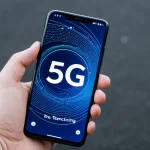Latest Statistics on Smartphone Usage by Age Group in the UK
Recent smartphone usage statistics UK reveal significant variations in habits across different age groups. According to the latest reports, nearly 99% of teens aged 16-24 own a smartphone, which aligns with their high frequency of daily use, often exceeding five hours. This age group leads the way in both adoption and engagement, reflecting the prominence of mobile connectivity in their daily routines.
In contrast, adults aged 25-44 show strong ownership as well, approximately 95%, with substantial usage focused on both work-related and social activities. This adult cohort demonstrates a balanced approach to smartphone use, combining productivity with leisure. Usage frequency averages around three to four hours per day, indicating steady digital integration without the same intensity seen in younger users.
In the same genre : Are There Ethical Implications of Smartphone Artificial Intelligence in UK Computing?
Seniors, aged 65 and over, present the most striking differences in age group smartphone trends. Only about 55% currently own smartphones, and their daily usage time is considerably lower, typically under one hour. However, this demographic has seen noticeable growth in adoption over recent years, largely driven by the need for connectivity with family and access to online services.
These findings mirror patterns identified in UK digital habits studies conducted by authoritative bodies such as Ofcom and the Office for National Statistics (ONS). They underscore how smartphone penetration and usage frequency vary widely by age, shaping tailored approaches for digital inclusion and service delivery. Understanding these smartphone usage statistics UK helps businesses, policymakers, and technologists better address the unique needs of each segment.
Also read : How is 5G technology transforming UK smartphones?
Shifting Patterns in App Preferences Across Age Groups
Understanding app preferences among teens in the UK reveals a strong inclination toward social media and entertainment platforms. Popular apps in this group prioritize real-time interaction and multimedia sharing, with video-centric content dominating usage. This demographic favors applications that enable quick, engaging communication and seamless content creation, reflecting their desire for instant connectivity and creative expression.
In contrast, mobile app usage among seniors centers more around practicality and health management. Seniors increasingly adopt apps geared toward digital payments, medication reminders, and health tracking, illustrating a growing comfort with technology that enhances daily living and well-being. These apps often emphasize simplicity and accessibility, catering to the needs and preferences of older users who may prioritize functionality over entertainment.
Generational tech trends reveal that productivity apps are gaining traction among middle-aged users who balance professional and personal commitments. This cohort often leverages digital calendars, task managers, and collaborative tools to streamline their workflows. Meanwhile, rising trends include the integration of social media with communication platforms, blending social interaction with messaging features, especially among younger adults.
As these patterns evolve, emerging behaviors such as increased use of digital payments and health-related apps highlight a shift towards more integrated and purposeful mobile experiences. The convergence of convenience, connectivity, and wellness in app preferences demonstrates how different age groups embrace technology uniquely, shaping the future landscape of mobile app development.
Behavioral Differences: How Age Shapes Smartphone Use
Age plays a crucial role in defining UK digital behaviour, especially when it comes to smartphone use. Younger users, typically those under 35, tend to prioritize features like messaging apps, video calls, and social media platforms. These tools serve as the backbone of their daily communication and entertainment habits, reflecting a high engagement level with streaming content and real-time interaction.
In contrast, older demographics, particularly those over 60, exhibit different tech habits. They often use smartphones more sparingly, focusing predominantly on essential functions such as calls and messaging rather than browsing or streaming. This divergence stems from factors including comfort with technology, physical limitations like vision or manual dexterity, and concerns about privacy.
Digital well-being is a shared concern across generations but manifests differently. Younger users worry about excessive screen time and social media addiction, while older users are more cautious about privacy risks and data security. This awareness influences their behaviour, leading to more deliberate and restricted smartphone usage.
Finally, various factors affect smartphone adoption and usage intensity among older adults. Access to training, device affordability, and physical usability features like larger screens and simplified interfaces significantly enhance engagement. Consequently, age-specific tech habits in the UK reflect a balance between embracing innovation and addressing practical limitations, shaping distinct smartphone user demographics.
Trends Year-Over-Year: Adoption and Usage Evolution
Analyzing smartphone adoption trends UK over the past five years reveals notable shifts, especially across different age segments. Younger generations continue to exhibit near-saturation levels of ownership, with usage rates consistently high. For example, individuals aged 18–24 maintain an almost universal reliance on smartphones, reflecting the generational mobile evolution where digital natives seamlessly integrate smartphones into daily life.
In contrast, older age groups show pronounced growth in both adoption and usage. The 55–64 age segment has experienced a significant uptick in smartphone ownership, driven partly by increased comfort with technology and the necessity to stay connected during the pandemic. This surge highlights how external factors like COVID-19 accelerated digital inclusion for older demographics, bridging prior tech gaps.
Overall, usage rate change illustrates plateaus in younger groups but marked increases among middle-aged and older users. Technological advancements such as improved user interfaces and more intuitive applications foster this broader acceptance. The trend signals a narrowing digital divide with smartphones becoming an indispensable tool across all stages of life.
Visualising Smartphone Usage: Data and Demographic Graphics
In the UK, smartphone usage varies notably across age groups, as shown in UK smartphone usage data visualisation. Infographics UK tech trends consistently reveal that younger demographics, particularly those aged 18 to 34, exhibit the highest engagement with mobile apps and social media. These visual tools clearly highlight that nearly 95% of this age group use smartphones daily, whereas this figure drops to around 70% among the 55 to 64 age bracket.
Age group comparatives in these charts emphasize the rising trend of smartphone adoption among older adults, signaling a shift in tech habits across generations. For example, infographics UK tech trends showcase a steady increase in smartphone usage within the 65+ category, albeit at a lower intensity compared to younger peers. This data underscores important shifts in connectivity patterns driven by evolving lifestyle needs.
A typical infographic illustrating UK smartphone usage data visualisation might display the percentage of daily users by age, alongside metrics such as average screen time and preferred app categories. Such charts deliver insightful, easy-to-digest visuals that allow readers to grasp the big picture of mobile technology adoption in the UK. These comparative visuals not only inform but also help anticipate future demands and tailor tech products or services for specific demographic segments.

